
By Gerry Barker
Photos by Gerry Barker
It was more than 100 years ago when the cruise liner Titanic struck an iceberg, broke apart and sank in the frigid waters of the North Atlantic, taking the lives of more than 1,500 people.
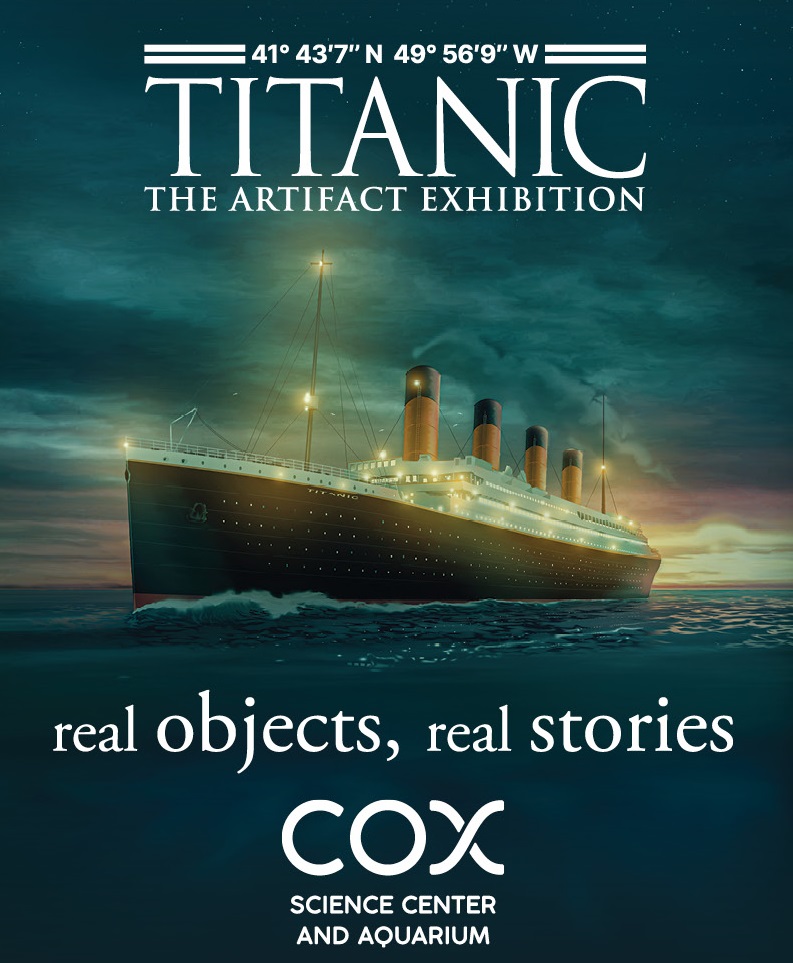
Since then, the maritime tragedy has been documented in films, books and memorials, but few have the same emotional impact as an in-person experience like “Titanic: The Artifact Exhibition,” which just opened at the Cox Science Center and Aquarium in West Palm Beach.

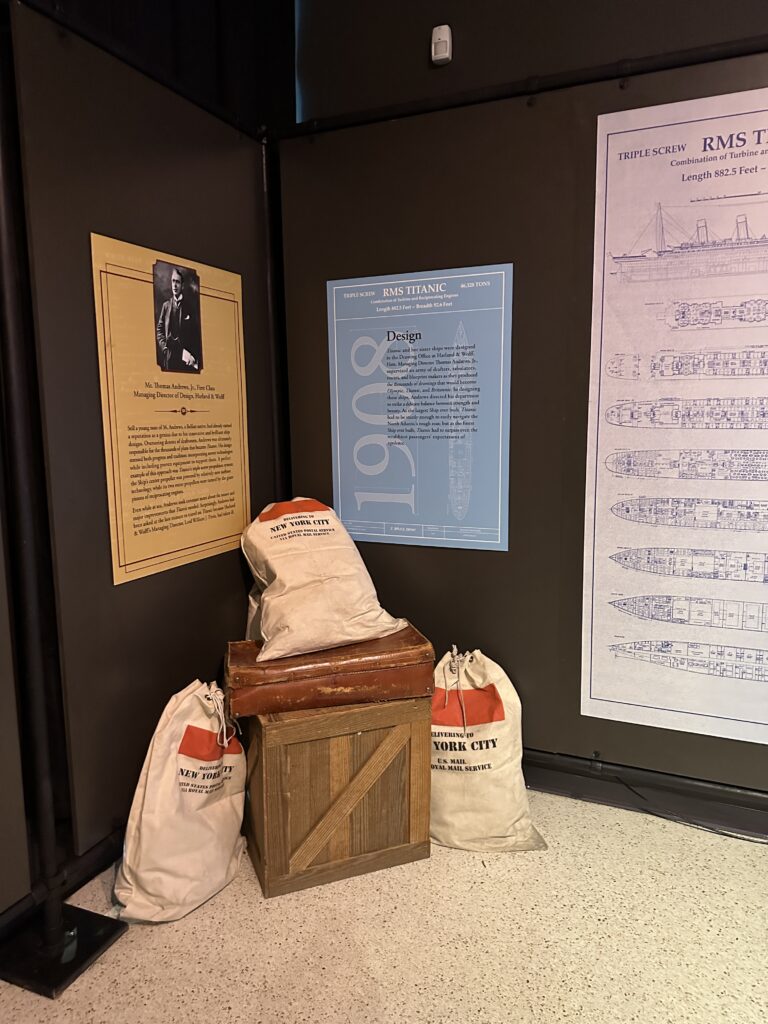
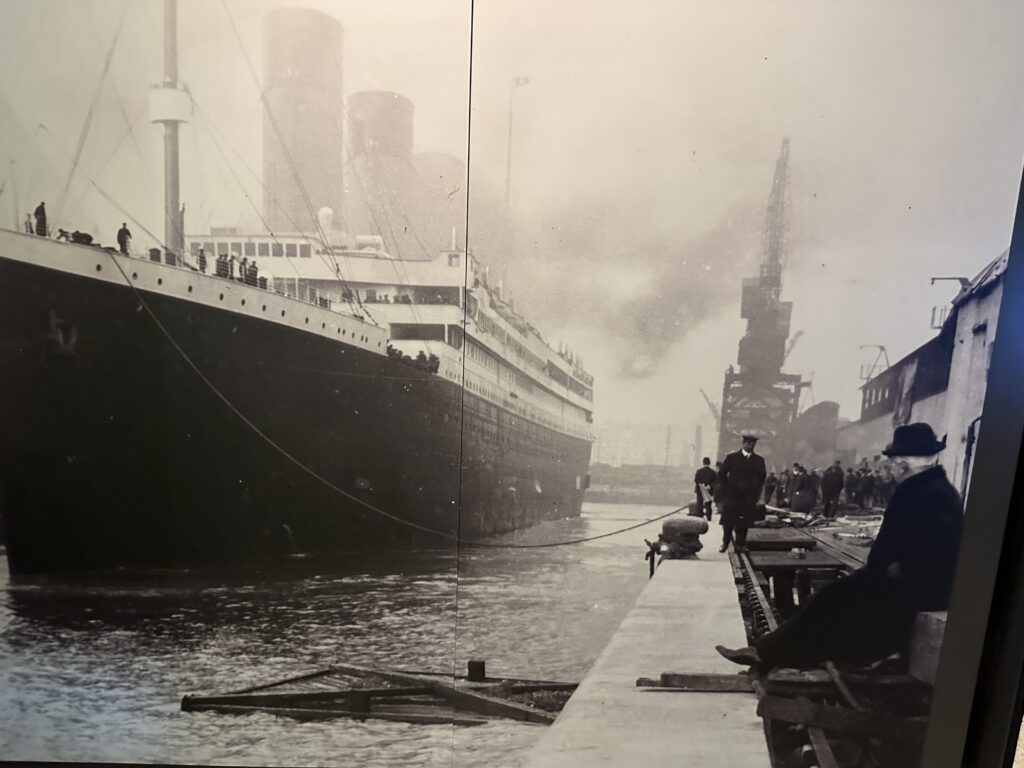
From re-creating that day of April 10,1912, where 100,000 gathered to cheer the “largest ship afloat” set sail on her maiden voyage to New York, to the scene on April 14 when her hull was ripped by ice, visitors feel they are on the journey themselves. In fact, everyone entering the exhibit is handed a White Star Line “Boarding Pass” bearing the name of one of Titanic’s passengers. At the exhibit’s end, you scan the QR code on it to find out if your guest survived.
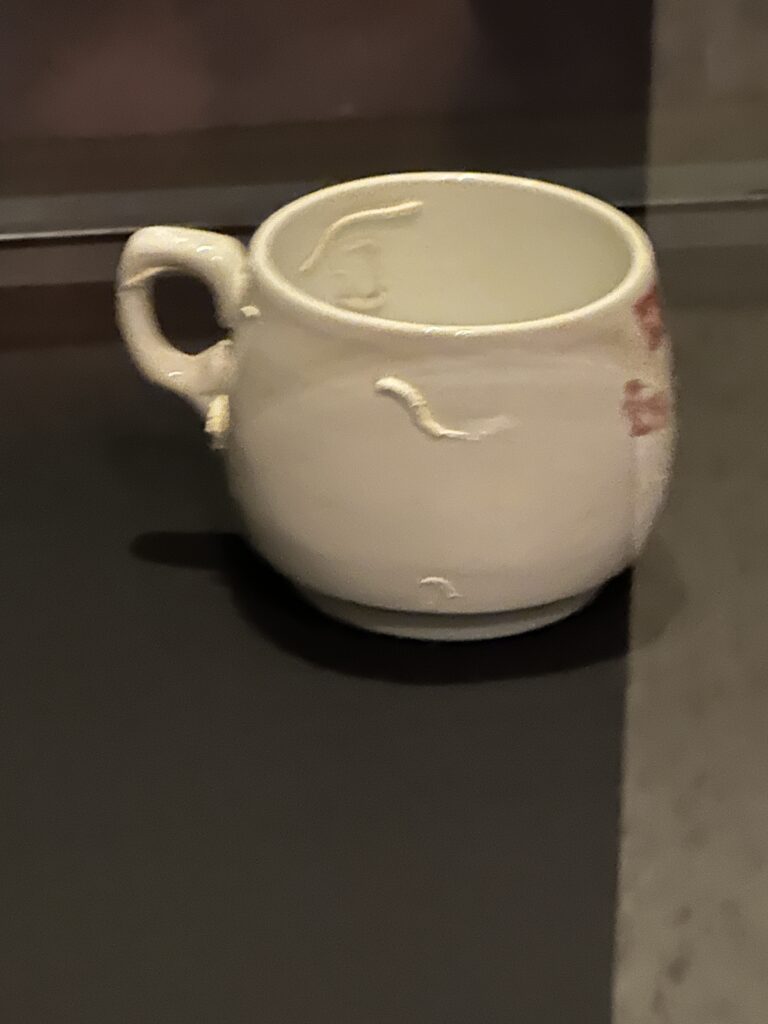
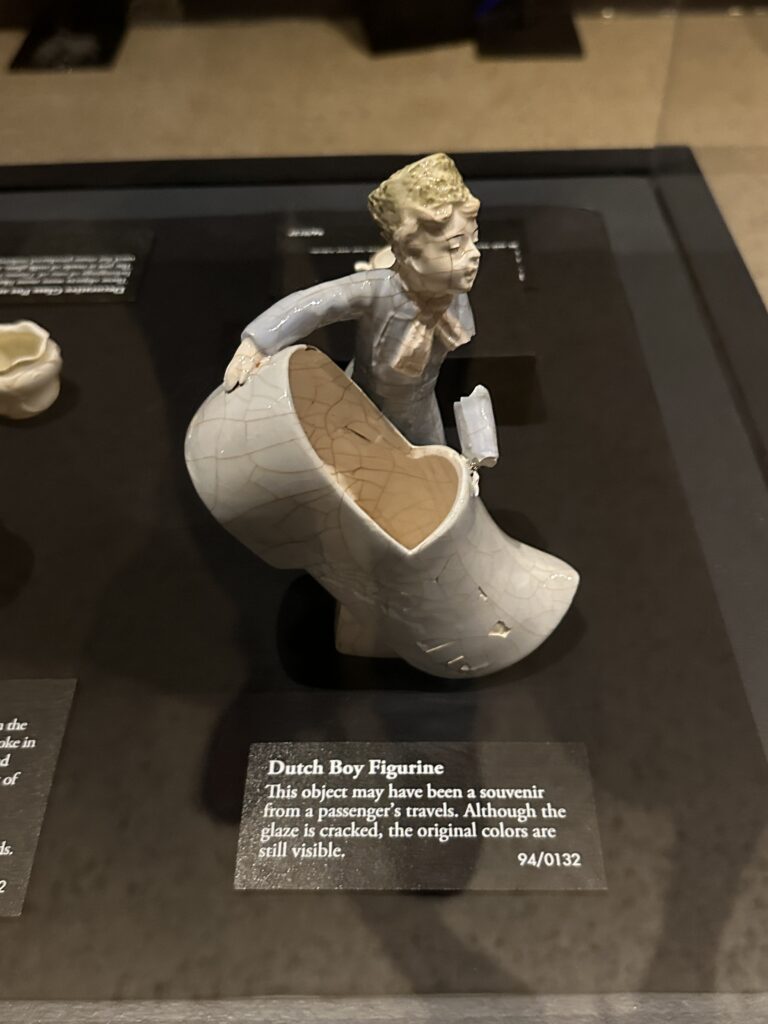

Along the way, there are over 80 artifacts recovered from the Titanic debris field, scattered along the sea bottom where Titanic sank in 12,000 feet of water, on display. Along with dishes and dinnerware is a cup with strange ceramic swirls. We were told those weren’t designs, but sea worms who attached themselves and became part of the artifact.
There are shoes and a remnant of a chair with the number still on it. Amazingly, we were told a recovered vial of perfume still had its scent. It’s hard not to be moved by viewing these relics that make the story all-the-more tragic.
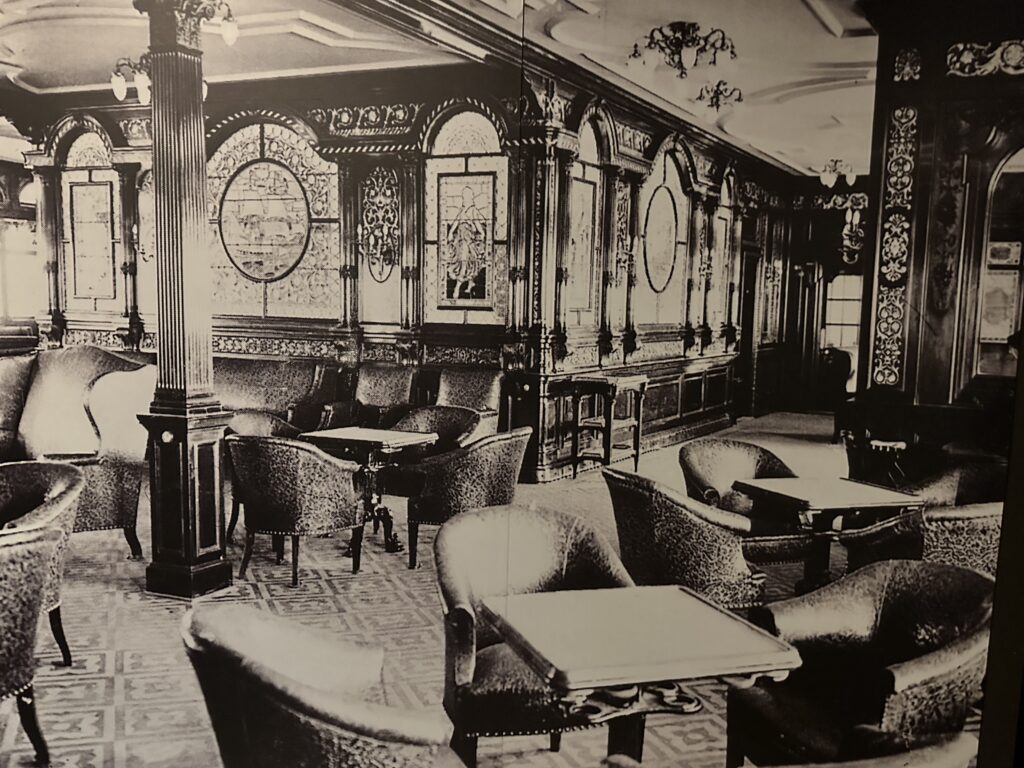
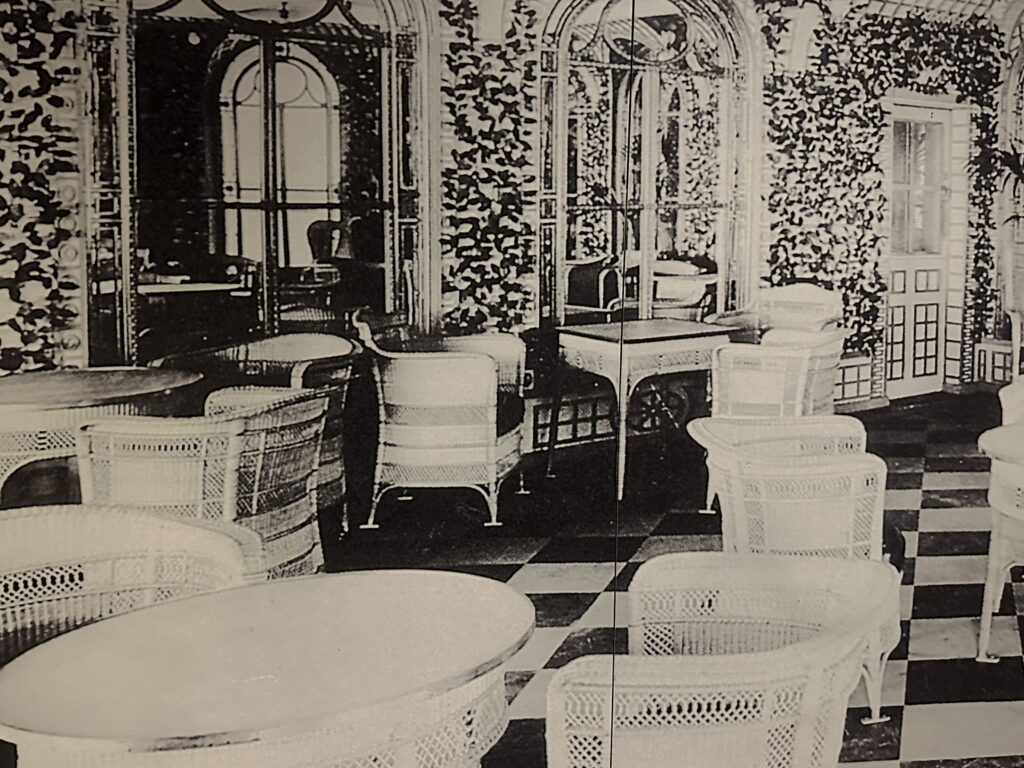
Wall-size photos create a feel for the ship’s opulence, and the differences between first, second and third class accommodations. To illustrate, the exhibit includes a complete re-creation of first-class and third-class cabins.
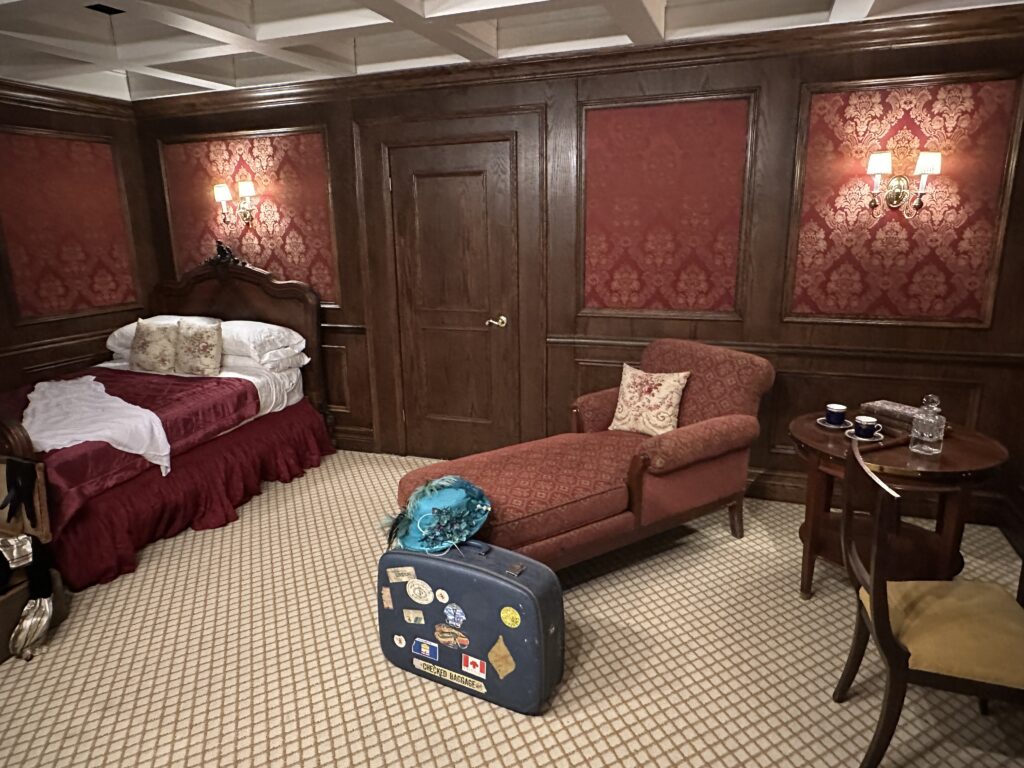
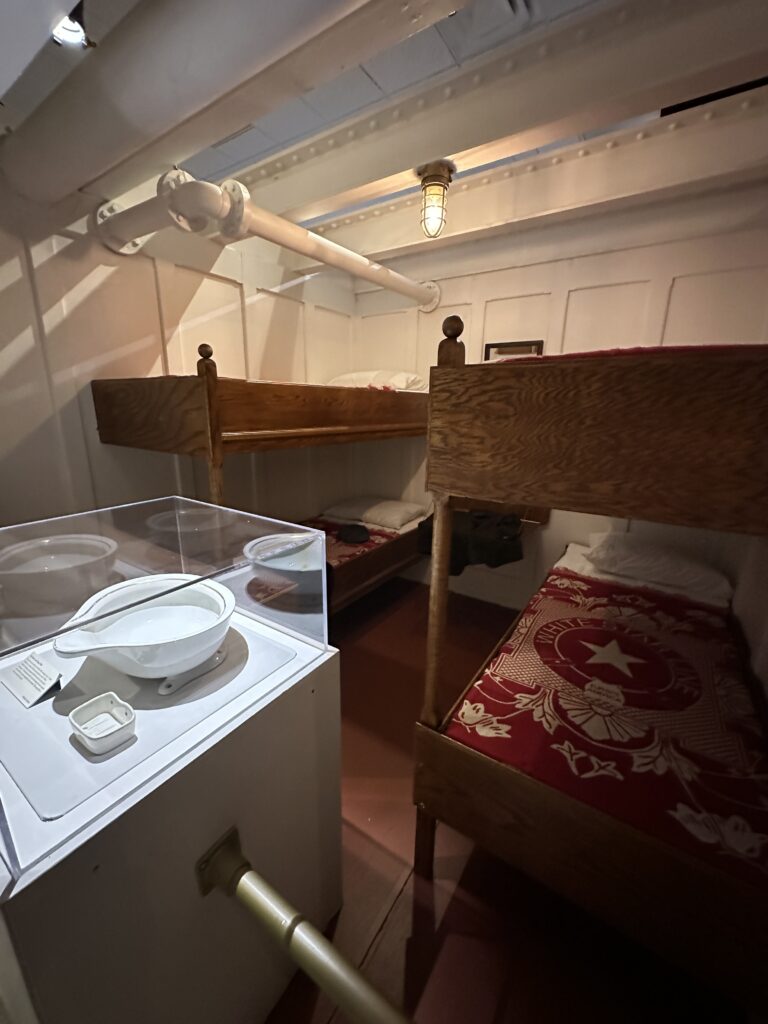
Passengers traveling first class had cabins that rivaled “the most elegant hotels,” with some suites offering hot and cold running water. Of course, that came at a price. In today’s dollars, the average first-class cabin was $57,200, and a suite, $103,000. While the third-class cabins were more basic, they did feature electric lighting, heat and water basins — things many homes at the time didn’t have. The cost for third class was $35, or $620 today.
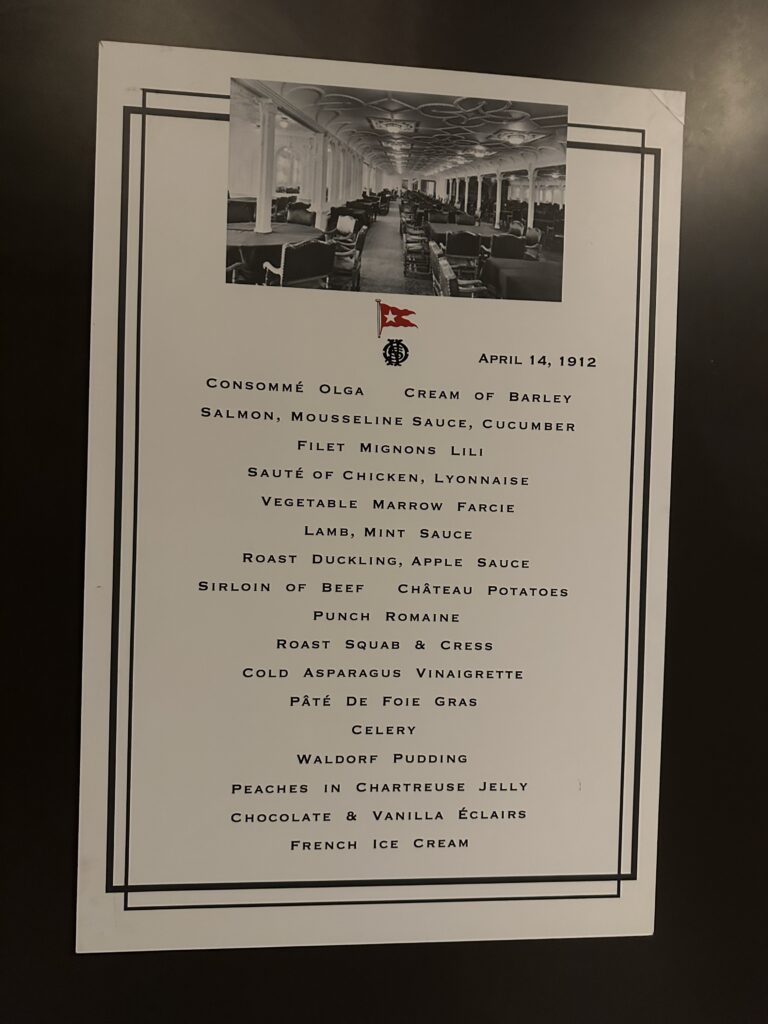

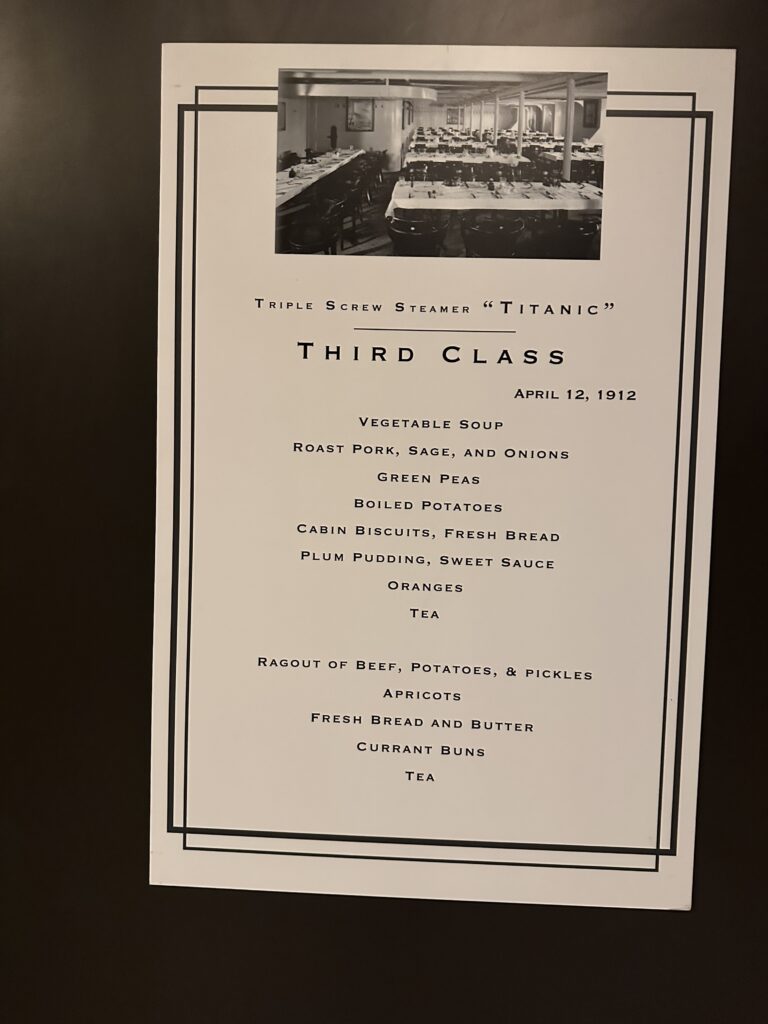
Food menus varied by class as well, and while first-class passengers could expect the finest cuisine, everybody enjoyed plenty of choices.
As you make your way through, warning signs appear, foretelling what’s to come. On the fateful night of April 14, when Titanic’s captain, Edward Smith, was being feted by first class passengers at a gala in his honor, the ship received its first warnings of icebergs in her path. It should also be noted that Smith had planned to retire in 1911, but was persuaded by White Star Lines to stay on for Titanic’s maiden voyage, which he planned to be his last.
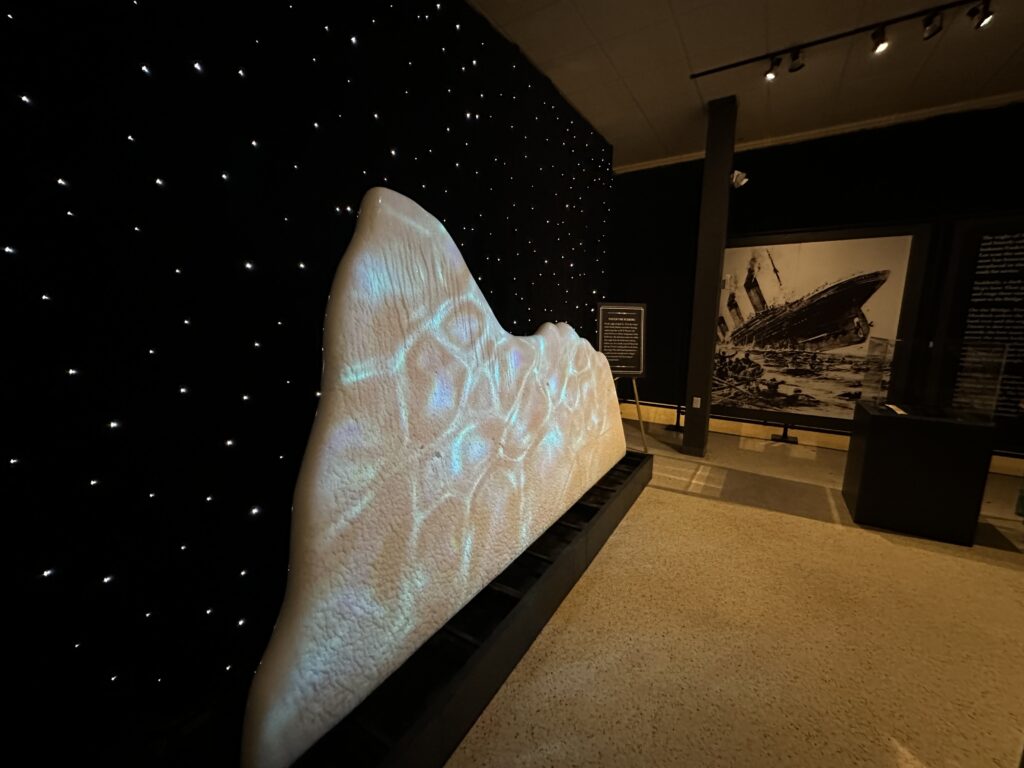
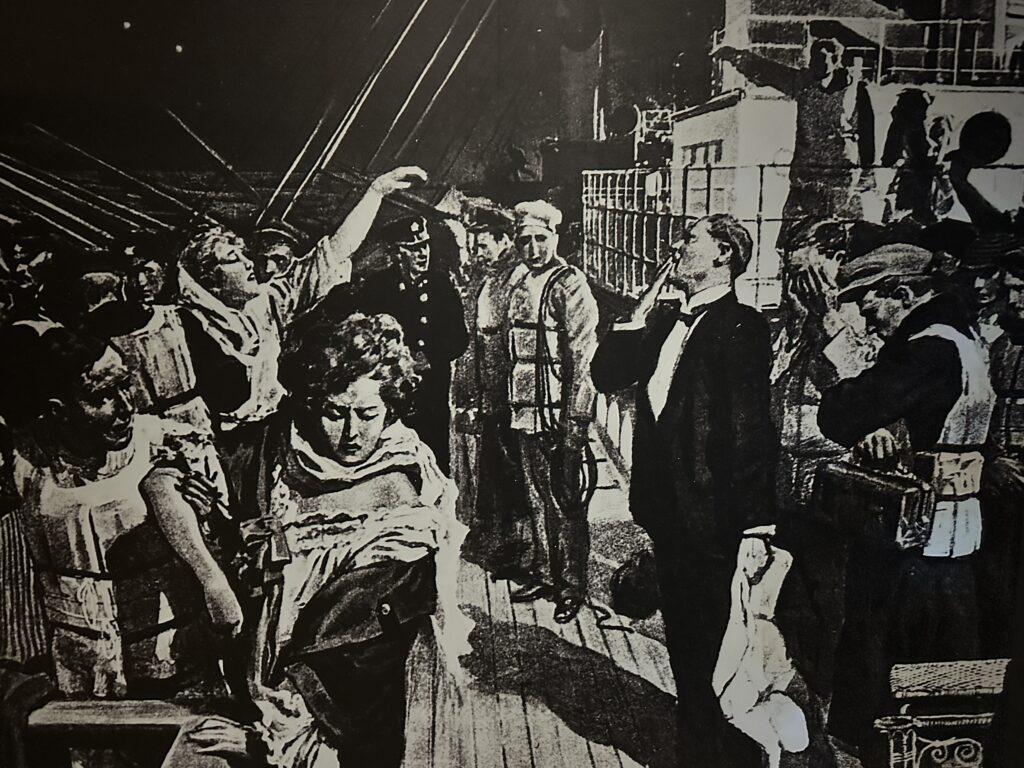
With the warning of “Iceberg Right Ahead!,” you enter a room featuring the tip of a large, white iceberg and wall art showing the Titanic sinking with life boats around. Even though that part of the story is well-known, it adds an extra dimension of drama as it re-creates the scene of both chaos and bravery.
Among the rich and famous aboard were industrialist John Jacob Aster IV, who had been on a European vacation with his new wife, Benjamin Guggenheim and Margaret “Molly” Brown, famous women’s rights advocate, who survived the sinking to later get the moniker, “Unsinkable Molly Brown.”
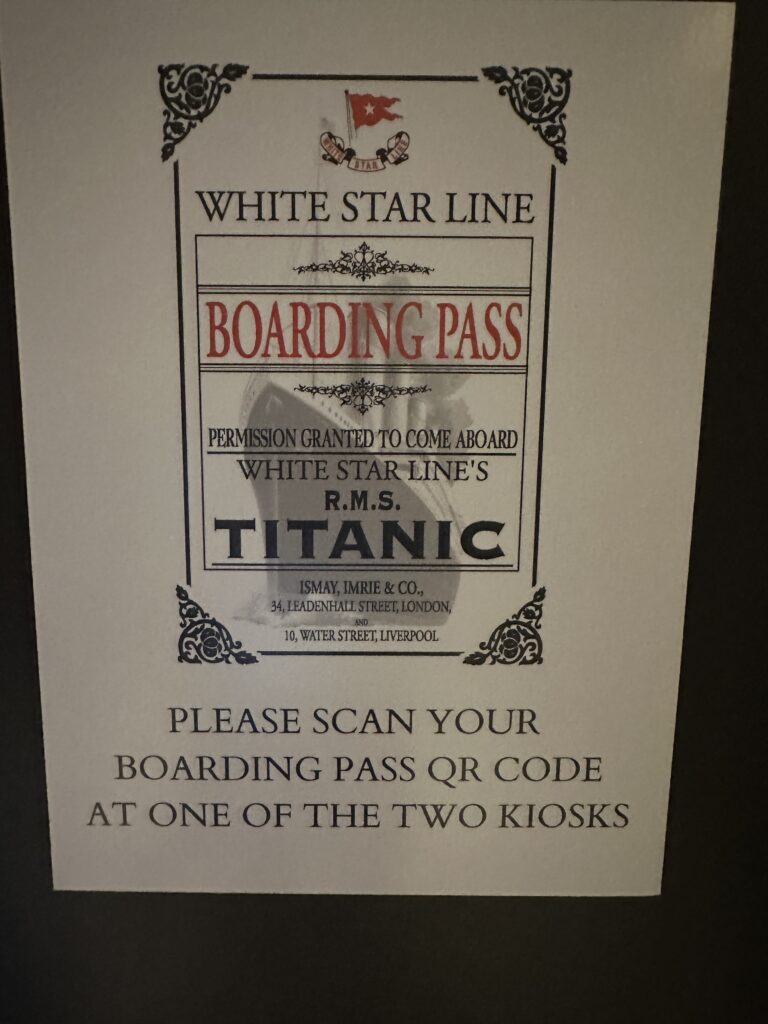

Now, what about the passengers on our assigned boarding passes? Upon scanning the code, I learned my passenger, Elizabeth Nye, was traveling alone after an extended visit with her family in England to mourn her dead husband. She survived. Pam’s guest, Johan Nysveen, born in Norway but living in Grand Forks, North Dakota, was on his way back to the States one final time to “give part of his farm to one of his sons.” He did not survive.
The Cox Science center will be hosting “Titanic: The Artifact Exhibit” through April 14, 2024. Member admission for children ages three to 12 is free and $13.95 for adults. General admission for adults is $20.95, $16.95 for kids ages 3-12 and $18.95 for seniors ages 60+ and older. For more information about the exhibit, visit coxsciencecenter.org.

Be the first to comment